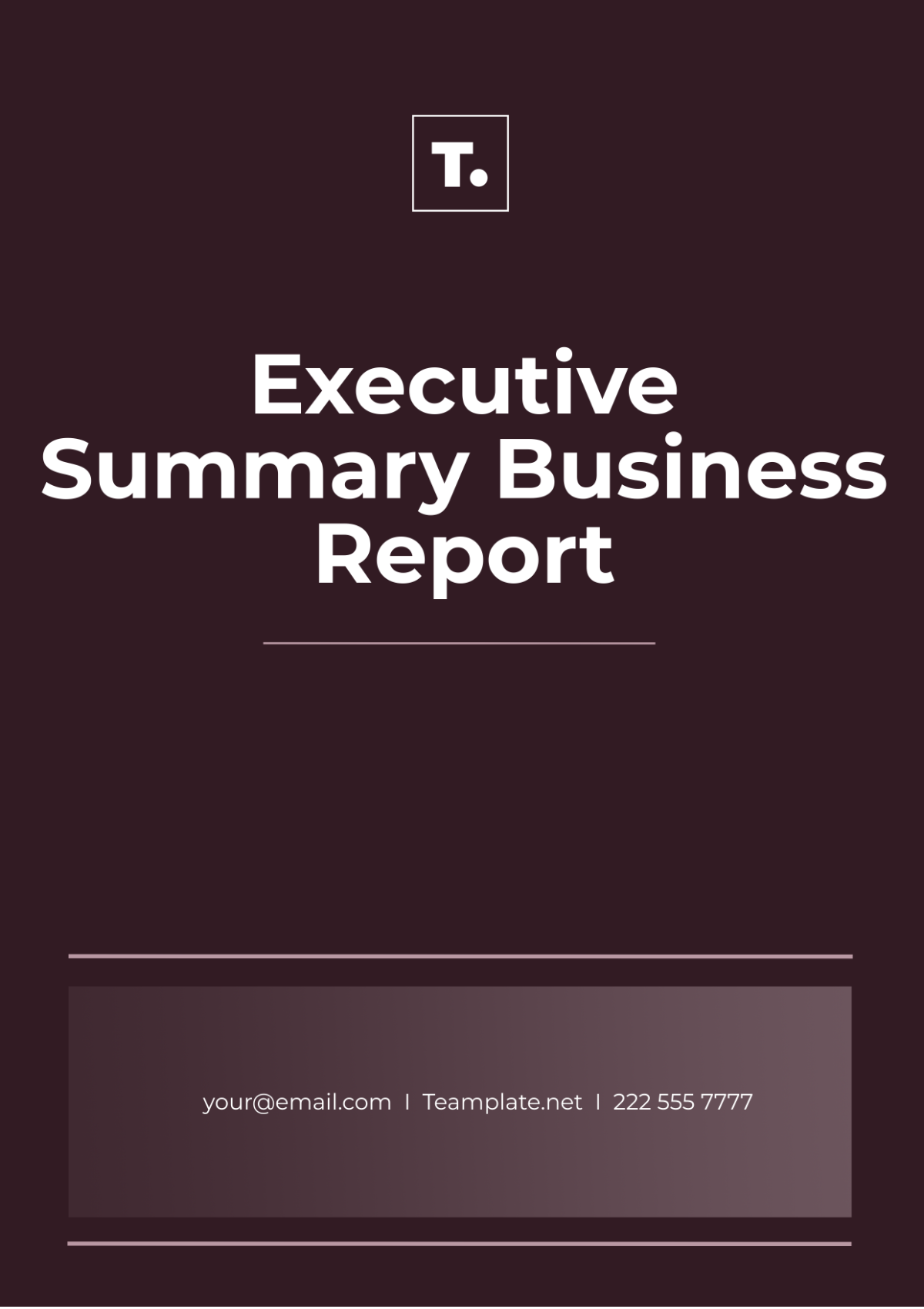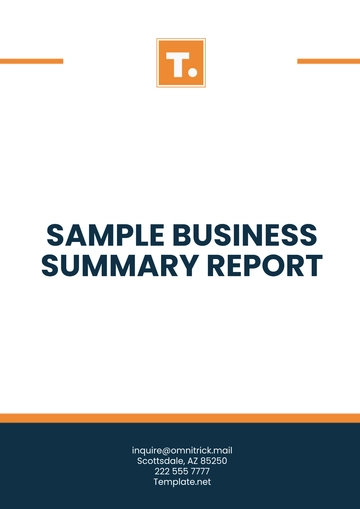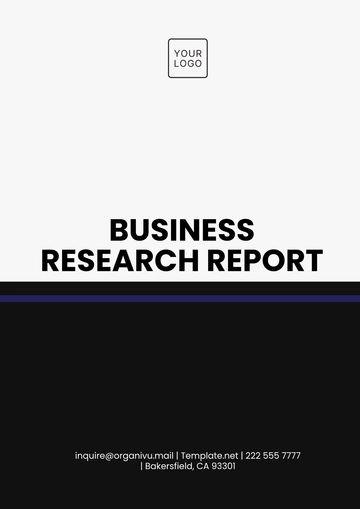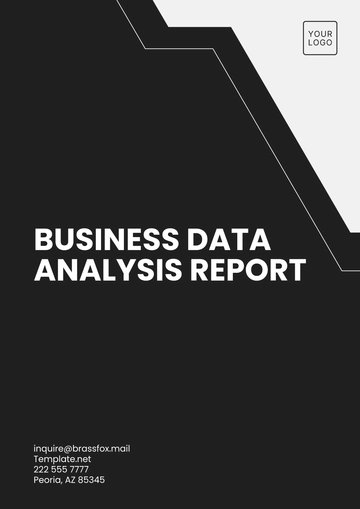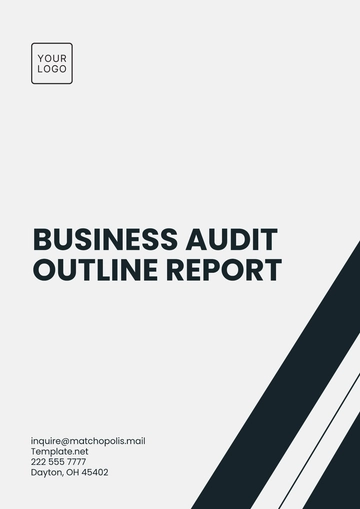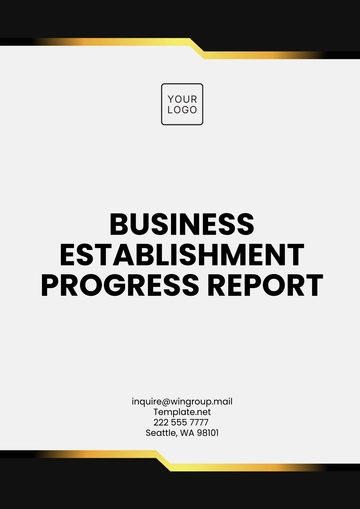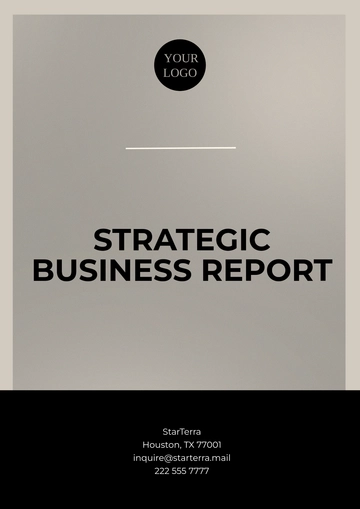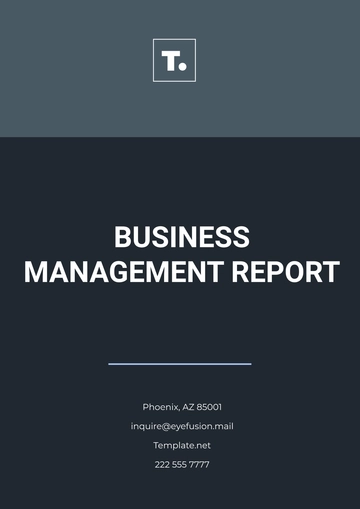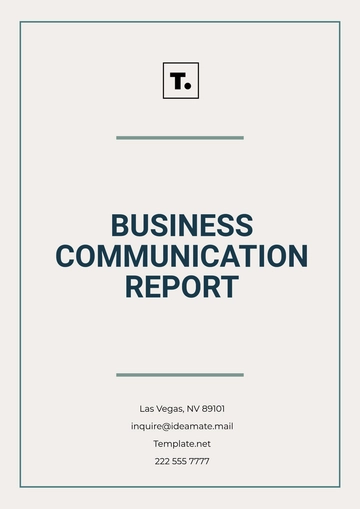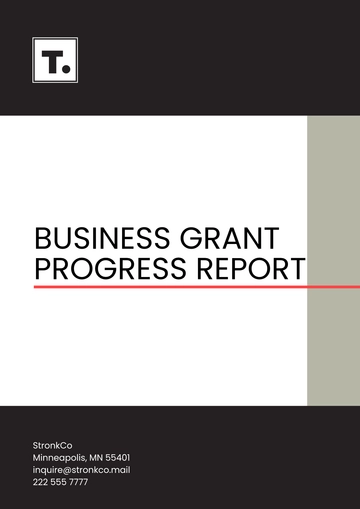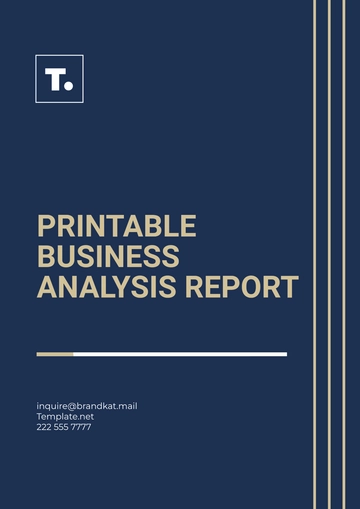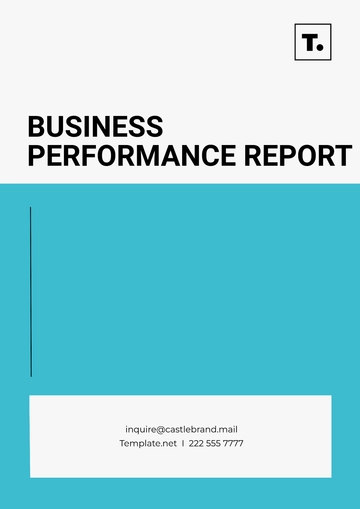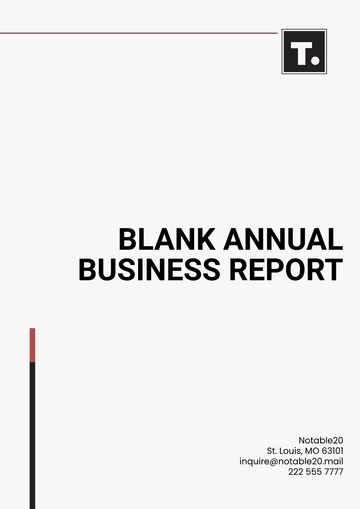Executive Summary Business Report
Prepared By | Company |
[YOUR NAME] | [YOUR COMPANY NAME] |
I. Introduction
The purpose of this report is to provide a consolidated overview of the operational and financial performance of [YOUR COMPANY NAME] for the specified reporting period. This document is intended to guide strategic decision-making and offer insights that align with our long-term objectives and mission.
An executive summary succinctly outlines significant achievements, identifies key challenges, and offers a perspective on the future approach that will drive sustainable growth. This overview enables stakeholders to swiftly comprehend essential details and progress of [YOUR COMPANY NAME].
II. Financial Overview
The financial segment of this report underscores the economic health of [YOUR COMPANY NAME]. Here, we present a summary of the financial data gathered during the reporting period, providing a snapshot of profitability, liquidity, and capital structure.
Key financial highlights include:
Total revenue generated versus the last reporting period
Significant changes in cost and expenditure patterns
Net income growth and contributing factors
III. Operational Achievements
During the reporting period, [YOUR COMPANY NAME] attained several operational milestones that contributed to our strategic goals. This section details these achievements, emphasizing their impact on our overall progress and efficiency.
Highlighted achievements include:
Introduction of new technology or systems that enhanced operational efficiency
Major contracts secured and their long-term implications on business
Improvements in customer satisfaction and service delivery
IV. Challenges and Risks
Identifying and addressing challenges is crucial for continuous improvement. This part of the report discusses the major challenges [YOUR COMPANY NAME] has faced during the period and the risk management strategies implemented.
Significant challenges include:
Market competition and strategies devised to maintain competitive advantage
Regulatory changes and their implications on operational practices
Technological disruptions in the industry and adaptive measures taken
V. Outlook and Strategic Directions
Looking forward, [YOUR COMPANY NAME] is set to capitalize on opportunities presented by current market dynamics and internal business developments. This section provides a forecast based on analysed trends and outlines strategic initiatives planned for the next period.
Future directions might include:
Expansion into new markets or segments
Enhancements in product or service offerings
Investments in technology to foster innovation and efficiency
VII. Findings
This section encapsulates the key findings derived from the analysis of both financial and operational aspects. These findings serve as the foundation for the subsequent recommendations and strategic decisions.
Financial Findings
Revenue Growth Trends: Analysis reveals a steady increase in total revenue compared to the previous reporting period, primarily driven by [[SPECIFIC FACTORS].
Cost Management: While revenue has increased, there are areas where costs have also risen. Identifying these cost drivers and optimizing expenditure remain critical for sustained profitability.
Net Income Dynamics: Despite challenges, the net income has shown growth due to [FACTORS]. However, attention to mitigating potential risks to profitability is warranted.
Operational Findings
Technology Integration: The adoption of [[SPECIFIC TECHNOLOGY] has notably improved operational efficiency, resulting in quantifiable improvements.
Contractual Milestones: Securing major contracts has positively impacted revenue streams, yet ongoing management and fulfillment are vital to sustain these gains.
Customer Satisfaction: Customer feedback indicates notable improvements in satisfaction levels, underscoring the effectiveness of recent service enhancements.
VIII. Recommendations
Based on the findings outlined above, the following recommendations are proposed to capitalize on strengths, address weaknesses, and navigate challenges effectively:
Financial Recommendations
Cost Rationalization: Implement stringent cost-control measures to optimize expenditure without compromising quality or service delivery.
Diversification of Revenue Streams: Explore opportunities to diversify revenue sources to reduce dependency on specific markets or products/services.
Investment in Financial Management Tools: Deploy advanced financial management tools to enhance forecasting accuracy and improve decision-making processes.
Operational Recommendations
Continued Technology Investment: Allocate resources towards further technological advancements to sustain and enhance operational efficiencies, with a focus on [SPECIFIC AREAS].
Strategic Partnerships: Foster strategic partnerships or alliances to expand market reach and secure long-term contracts, thereby ensuring consistent revenue streams.
Continuous Customer Engagement: Establish mechanisms for ongoing customer feedback and engagement to maintain high levels of satisfaction and loyalty.
IX. Conclusion
In conclusion, by implementing the outlined recommendations and leveraging the identified strengths, [YOUR COMPANY NAME] is poised for continued growth and success. Through proactive measures and strategic initiatives, we remain committed to delivering value to our stakeholders while navigating the evolving business landscape with resilience and agility.
Report Templates @ Template.net
